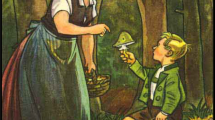Abstract
In Kafka's "Penal Colony", censorship -- the control and manipulation of information -- is functionalized for an aesthetic and poetological discourse. Within the closed-off colony, social hierarchies and groups are formed on the basis of information and disinformation, such that the penal system itself relies on the ignorance of those to be punished. For in the process of his execution, the offender is supposed to decipher the inscription the machine administers to his body, and it is this eventual decoding which represents the torture's true purpose. Here, the dysfunctional quality of the machine, together with the artistic nature of the inscriptions, open up a poetological perspective which revolves around the motif of understanding. The object of these endeavours is the literary text, symbolized by the inscriptions. Taking the narrated world of the island colony as a frame of reference, the figures embody the narrative functions of author, fictional character and reader, engaged in creation and reception. But ultimately, the literary text acts as censor: It does not yield to the reader's knocking on the gate; complete understanding is impossible.
Similar content being viewed by others
Author information
Authors and Affiliations
Rights and permissions
About this article
Cite this article
Müller, B. Die Grausame Schrift: Zur Ästhetik der Zensur in Kafkas "Strafkolonie". Neophilologus 84, 107–125 (2000). https://doi.org/10.1023/A:1004368718801
Issue Date:
DOI: https://doi.org/10.1023/A:1004368718801




